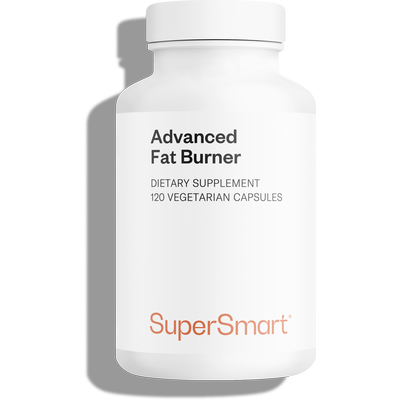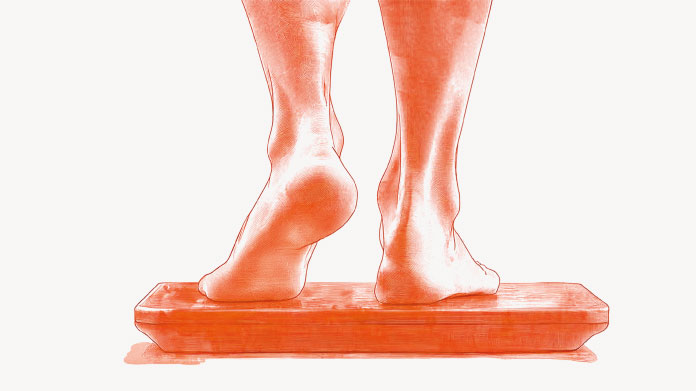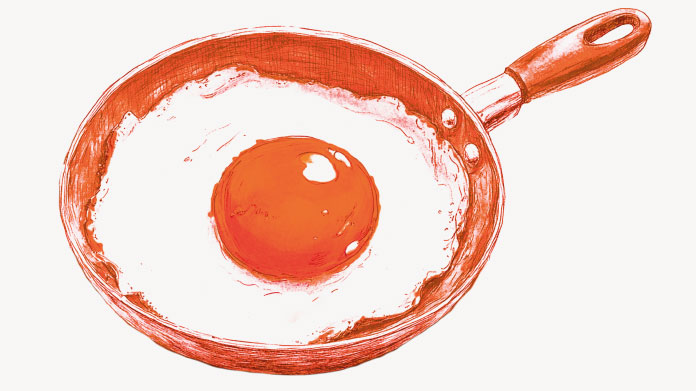
What is the Atkins diet?
The Atkins diet is a low-carbohydrate diet designed to promote rapid and lasting weight loss.
It was developed in the 1970s by Dr Atkins, whose name it bears today.
The principle is simple: drastically reduce your intake of sugars while ensuring that you maintain a sufficient intake of proteins and healthy fats.
This mechanism forces the body to draw on its own fat reserves to provide energy for the cells.
The Atkins diet is divided into 4 phases:
- first phase (approximately 2 weeks): very strict reduction in carbohydrates, with an intake of less than 20 g per day, the equivalent of an apple.
- second phase: continued weight loss, but at a slower rate, with the reintroduction of certain carbohydrate-containing foods (starchy foods, legumes, wholegrain cereals, etc.).
- third phase: slowing of weight loss with adoption of long-term eating habits and the gradual reintroduction of carbohydrate-containing foods, provided that the desired weight is maintained.
- fourth phase: stabilisation of the results with a diet whose carbohydrate intake depends on the individual's metabolism, as determined during the third phase.
What are the benefits of the Atkins diet, and does it really work?
Various testimonials from people who have followed it suggest that the Atkins diet can be effective for weight loss.
The initial stages, which involve severely restricting carbohydrates, lead to ketosis, a state in which the body, deprived of sugar, begins to burn fat for energy, producing ketones as an alternative fuel to glucose.
This phenomenon generally leads to rapid weight loss in the first few weeks (1).
At the same time, the high proportion of protein and good fats consumed helps to make you feel full and reduces the snacking that is often the cause of excess weight.
What's more, the lack of carbohydrates tends to encourage the elimination of water from the tissues, which helps to refine the figure.
It should be borne in mind, however, that a diet as strict as the Atkins diet can prove difficult to adhere to over the long term, particularly in social terms or for those fond of the programme's forbidden foods.
Some studies also point to the risk of a yo-yo effect if the diet is discontinued, as a return to 'classic' carbohydrate consumption can lead to a significant calorie surge if not properly managed (2).
Atkins diet: sample menus
Sample menu for phase 1
Carbohydrates are drastically reduced, making way for foods rich in proteins and good fats:
- breakfast: scrambled eggs with bacon, possibly with green vegetables + sugar-free coffee or tea;
- lunch: grilled chicken fillet, green salad and avocado with olive oil, fromage frais;
- dinner: salmon steak, courgettes, sugar-free yoghurt;
- snack: hard cheese or a few olives or a handful of nuts.
Sample menu for phase 2
The authorised foods have been expanded, and some fruit has been reintroduced:
- breakfast: omelette with mushrooms and cheese + sugar-free coffee or tea;
- lunch: tuna salad, cherry tomatoes, onions, pumpkin seeds + plain yoghurt;
- dinner: prawn curry with coconut milk + cauliflower and steamed broccoli;
- snack: a few raspberries or a handful of almonds.
Sample menu for phase 3
The variety of foods eaten increases, while maintaining a low carbohydrate intake:
- breakfast: plain Greek yoghurt with nuts and berries + sugar-free tea or coffee;
- lunch: turkey fillet + mixed salad (raw vegetables, hard-boiled egg, olives, rapeseed oil, vinegar) + plain fromage frais;
- dinner: baked chicken (without skin) + leeks and cauliflower + plain yoghurt;
- snack: vegetable sticks with homemade hummus or smoothie with plant milk and avocado.
Sample menu for phase 4
The aim is to stabilise your weight with a low-carb but balanced diet:
- breakfast: smoothie with almond milk, avocado and chia seeds;
- lunch: lentil salad, smoked salmon and avocado + plain yoghurt;
- dinner: grilled meat or fish fillet, homemade ratatouille, green salad;
- snack: square of dark chocolate (minimum 85%) or a few red fruits or unsweetened fromage frais.
Useful food supplements to accompany the Atkins diet
To compensate for water loss
Certain food supplements can be useful to accompany an Atkins diet.
Because of the significant depletion of water and, therefore, electrolytes, it may be useful to compensate for these losses in order to avoid cramps and fatigue, using a potassium-based formula (3) (such as Potassium Orotate) or a magnesium-based formula (4) (such as Magnesium Malate), or a formula containing several minerals (such as Multimineral Complex).
It could also be beneficial to pay particular attention to sodium (for example, through broths or mineral salts), while keeping your consumption very moderate.
To avoid deficiencies
Eating less fruit and vegetables can lead to various nutritional deficiencies if you're not careful.
Depending on the composition of your meals, it may be worth taking a dietary supplement containing B vitamins (such as our Coenzymated B Vitamins) or vitamin C (such as Triple C).
An omega 3 supplement can also be used to balance fat intake (see Super Omega 3).
To compensate for reduced dietary fibre
Reducing your intake of fruit and vegetables also means ingesting less fibre, which is essential for intestinal balance and regulating transit.
To compensate for this deficit, it is possible to consume fibre as a dietary supplement without adding carbohydrates, as with psyllium, which is rich in soluble fibre (see Psyllium Husk).
Probiotics can also help to balance the intestinal microbiota.
Some of them, such as Lactobacillus gasseri and Akkermansia muciniphila (see the probiotic supplements of the same name, Lactobacillus Gasseri and Akkermansia Muciniphila), have been studied for their benefits as part of a slimming diet (5).
To support the fat-burning action
Certain food supplements can also be beneficial during an Atkins diet, as they are specially formulated to support fat burning (such as the Advanced Fat Burner formula).
You can also opt for patented active ingredients with slimming effects backed up by clinical studies (such as our Slendacor®-based Lipo Stop).
SUPERSMART ADVICE
References
- McGaugh E, Barthel B. A Review of Ketogenic Diet and Lifestyle. Mo Med. 2022, Jan-Feb;119(1):84-88. PMID: 36033148; PMCID: PMC9312449.
- Paoli A. Ketogenic diet for obesity: friend or foe? Int J Environ Res Public Health. 2014 Feb 19;11(2):2092-107. doi: 10.3390/ijerph110202092. PMID: 24557522; PMCID: PMC3945587.
- Castro D, Sharma S. Hypokalemia. 2025 Jan 19. In: StatPearls [Internet]. Treasure Island (FL): StatPearls Publishing; 2025 Jan–. PMID: 29494072.
- Kothari M, Wanjari A, Shaikh SM, Tantia P, Waghmare BV, Parepalli A, Hamdulay KF, Nelakuditi M. A Comprehensive Review on Understanding Magnesium Disorders: Pathophysiology, Clinical Manifestations, and Management Strategies. 2024 Sep 1;16(9):e68385. doi: 10.7759/cureus.68385. PMID: 39355467; PMCID: PMC11444808.
- Torres B, Sánchez MC, Virto L, Llama-Palacios A, Ciudad MJ, Collado L. Use of probiotics in preventing and treating excess weight and obesity. A systematic review. Obes Sci Pract. 2024 Jun 19;10(3):e759. doi: 10.1002/osp4.759. PMID: 38903852; PMCID: PMC11187407.
2 Days
The products I use are excel·lent
The products I use are excel·lent
ROSAS Josep Maria
10 Days
Delivery is prompt and I never saw a…
Delivery is prompt and I never saw a quality problem with the manufacturing. It is not possible to assess efficacy on a personal basis, since too many factors come into play. Efficacy can only be assessed statistically with a sufficient number of cases.
Roger De Backer
11 Days
I collaborates with the Supersmart…
I collaborates with the Supersmart more than 10 years. Every thing is going good. Quality of the things is good. Delivery comes in time. Five stars definitely !!!
Oleksiy
11 Days
All good
Simple, frictionless site, easy ordering, good delivery updates and execution.
Chris Robbins
13 Days
I feel better
I feel better
Peter Ammann
14 Days
Prompt delivery
Prompt delivery
JAKUB Radisch
15 Days
My new go-to for top quality supplements!
I am buying more and more of my supplements from this superb, high quality company. Cannot recommend it enough. Plus, excellent customer service with a quick, helpful team and speedy deliveries. Highly recommend Supersmart!
Cecilie H.
19 Days
SUPERSMART WHAT ELSE👍
SUPERSMART WHAT ELSE👍
DIEDERLE Christophe
21 Days
Excellent quality products with…
Excellent quality products with innovative formulas, as someone who has been suffering with acid reflux, these supplements have been lifesavers.
Oriana Moniz
22 Days
high quality supplement!
high quality supplement!
GALANT
22 Days
Good service prompt delivery
Good service prompt delivery
Mrs Marcella Reeves
27 Days
I like your clear explanation
I like your clear explanation. And how to make a choice of products for a specific health problem
Ingrid
33 Days
Great product and it arrives quickly.
Great product and it arrives quickly.
SOMMARIVA Gianni
35 Days
Excellent products and fast service.
Excellent products and fast service. What do we need more?
Margarida
39 Days
The variety of products is amazing
The variety of products is amazing, the offers are good and the sending is very fast. I just miss having a bit more of guidance about combinations, possible interactions, etc.
Maria Angeles Verdu




